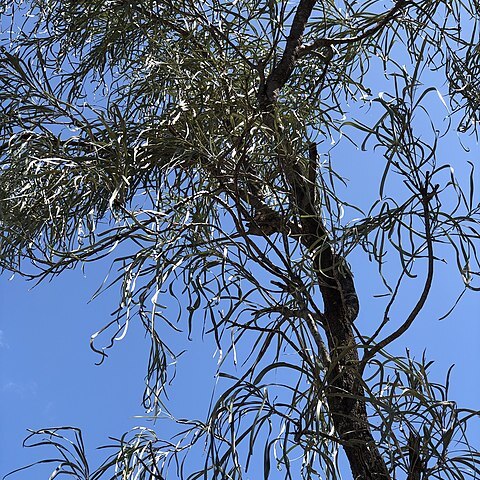A shrub or small tree. It grows 3-15 m tall. The bark is dark, hard and cracked. The leaves hang downwards. The leaves are alternate ad long and thin. They can be 10-40 cm long by 2-10 mm wide. They are narrow and taper to the base. They are dull green above and have white silky hairs underneath. The flowers are white to cream and waxy in crowded clusters. The clusters are 5-10 cm long and the flowers are in pairs along the cluster. The fruit are dry and woody. They are almost round and 2-2.5 cm long by 1.5 cm wide. They split open along the seeds releasing 2 seeds with broad wings.


